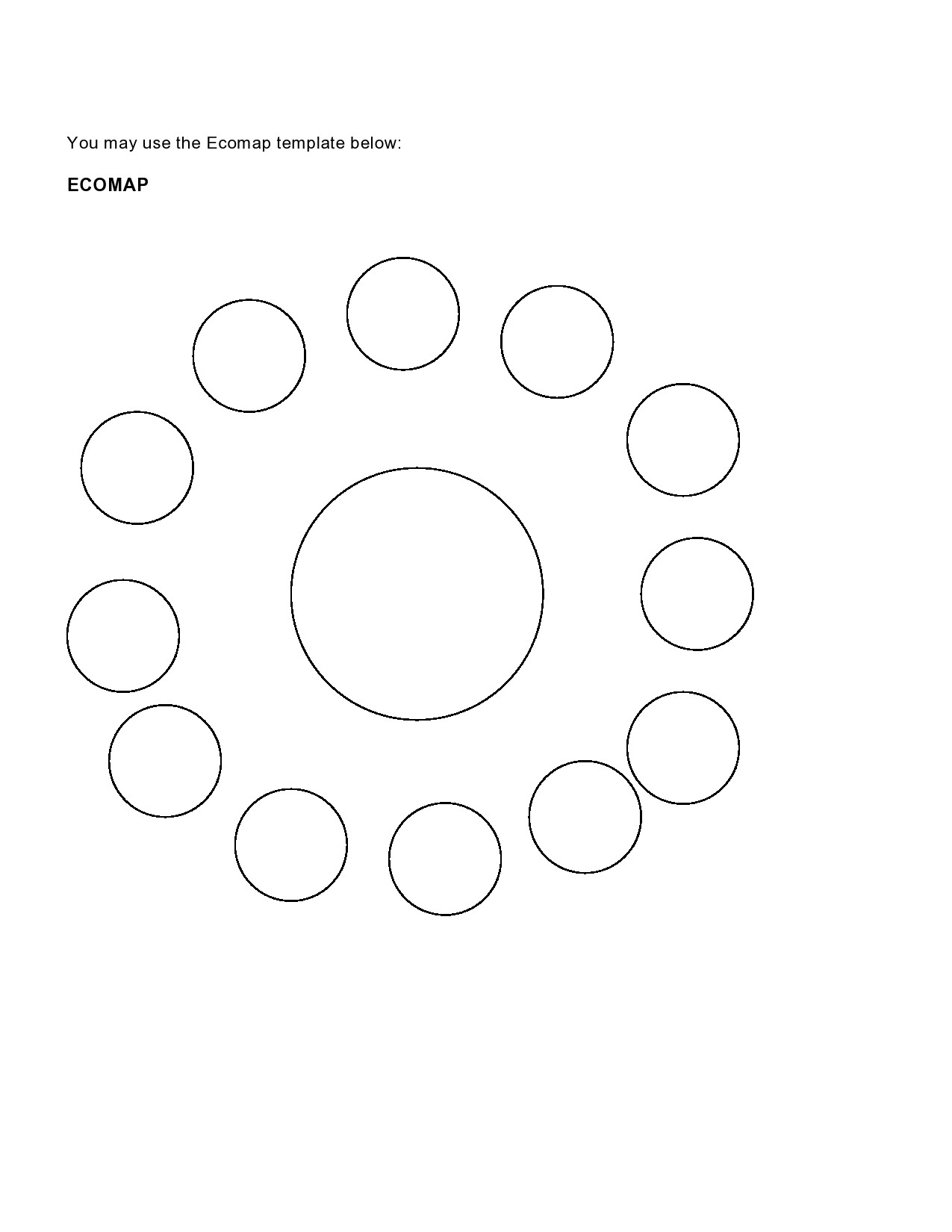
- #Free ecomap maker how to
- #Free ecomap maker professional
The type of social work ecomap you create will depend on the person’s systems or network.īelow is an ecomap example in social work.Ĭreating an ecomap is a graphic and useful way of identifying all the systems at play in the family’s life.
If it involves a family member in a dispute, then the arrows may go both ways. #Free ecomap maker professional
If a professional helps a service user, then the arrow would point to the service user.The arrows in the ecomap show which direction the effect occurs.Short annotations can be useful in explaining the nature of the connections.The links between them show the nature of the relationships how significant and how positive.These are systems of the individual and parts might be professional services, individuals, families, or communities.The individual or family goes in the centre of the ecomap, and the various parts of the network go around them.What you put on your Ecomap will depend on the structure of the individual’s ecological system. The advantage of using this approach is that the sticky notes can be moved around the paper before drawing any lines. You can get this in a multitude of shapes, colours and sizes up to A3 and even the size of a flip-chart pad.
#Free ecomap maker how to
How to facilitate change in social work Ecomap activity with children and familiesĪ social worker may start an ecomap creation activity with a child, teenager or family.Ī useful way of completing an eco-map is to use sticky notes based on the information gathered during an assessment or initial contact.  Social work and positive working relationships. The Wikipedia page here shows the difference connection lines for family relationships and different emotional relationships. Arrows pointing each direction depicts a two-direction flow of influence. Arrows pointing to the system mean that the client primarily influences the system.
Social work and positive working relationships. The Wikipedia page here shows the difference connection lines for family relationships and different emotional relationships. Arrows pointing each direction depicts a two-direction flow of influence. Arrows pointing to the system mean that the client primarily influences the system. 
Arrows pointing to the client mean that the system primarily influences the client.Curvy or red lines mean that the system is a stressful relationship.
 Thicker (darker) lines mean stronger relationships. Horizontal line shows an intimate relationship (crossed out when the relationship is over). It shows the flow or resources or a lack of it.
Thicker (darker) lines mean stronger relationships. Horizontal line shows an intimate relationship (crossed out when the relationship is over). It shows the flow or resources or a lack of it.  It shows important nurturing or conflicts in relationships. This helps social workers determine the best intervention strategies for a child and their family.Ī social work ecomap may be used by social workers via visual tools (diagrams or pictures) to engage with service users and elicit the required information.Įcomaps can be made using basic materials (pen, paper, sticky notes). Ultimate Guide on How to Use Social Work Ecomapsĭuring initial assessments, social workers will usually focus on learning about the service user’s or client’s significant life events, important relationships, professional support, which relationships are working or not working so well. With a social work ecomap activity, social workers can help foster positive working relationships and explore effective intervention strategies to facilitate change. This includes family dynamics, connections to their social systems and the community, the family unit’s level of connection to the external world, areas of deprivation where resources may be needed or strengthened, and areas of service duplication. In addition, using ecomap symbols as part of ecomap creation gives social workers a comprehensive picture of many things. In a presentation by Brown and Pittard (2020), they also highlighted that the purpose of the ecomap is to understand the families’ ecology and their environment. A social work ecomap helps form relationships through which a child, parent or family is empowered.
It shows important nurturing or conflicts in relationships. This helps social workers determine the best intervention strategies for a child and their family.Ī social work ecomap may be used by social workers via visual tools (diagrams or pictures) to engage with service users and elicit the required information.Įcomaps can be made using basic materials (pen, paper, sticky notes). Ultimate Guide on How to Use Social Work Ecomapsĭuring initial assessments, social workers will usually focus on learning about the service user’s or client’s significant life events, important relationships, professional support, which relationships are working or not working so well. With a social work ecomap activity, social workers can help foster positive working relationships and explore effective intervention strategies to facilitate change. This includes family dynamics, connections to their social systems and the community, the family unit’s level of connection to the external world, areas of deprivation where resources may be needed or strengthened, and areas of service duplication. In addition, using ecomap symbols as part of ecomap creation gives social workers a comprehensive picture of many things. In a presentation by Brown and Pittard (2020), they also highlighted that the purpose of the ecomap is to understand the families’ ecology and their environment. A social work ecomap helps form relationships through which a child, parent or family is empowered.








 0 kommentar(er)
0 kommentar(er)
